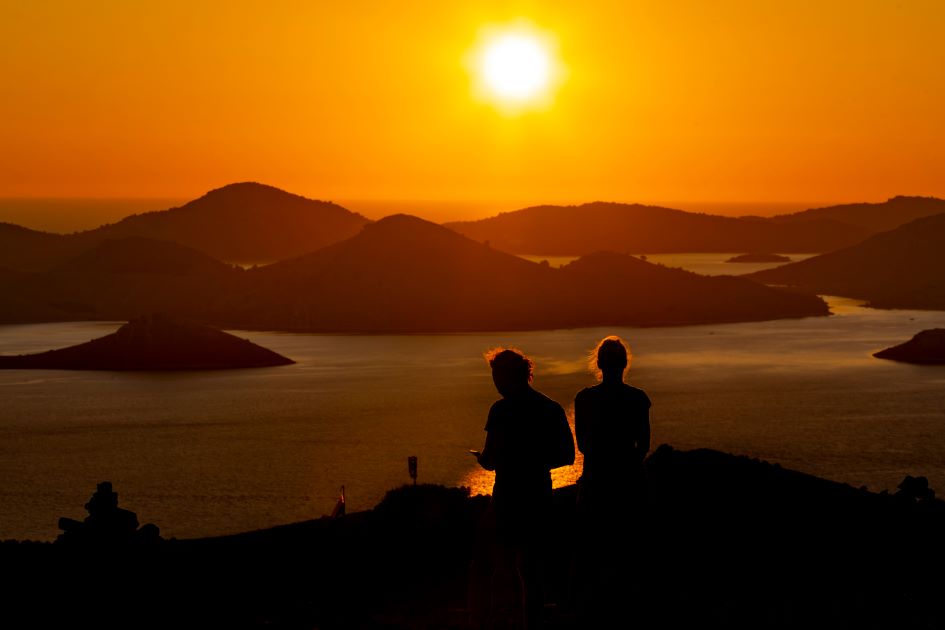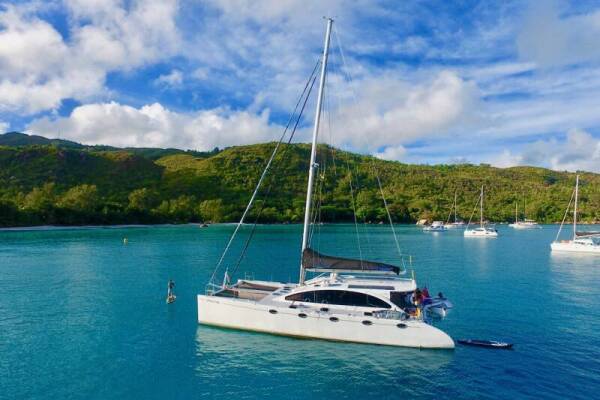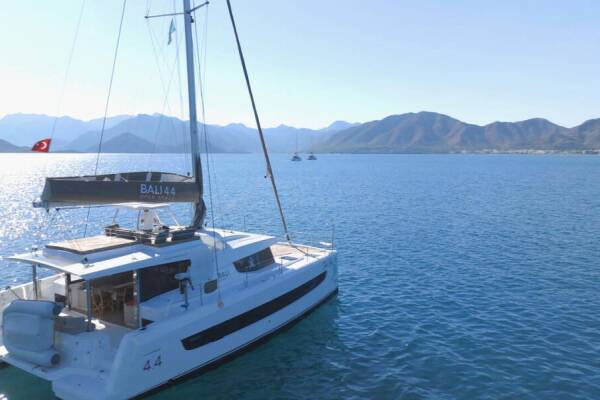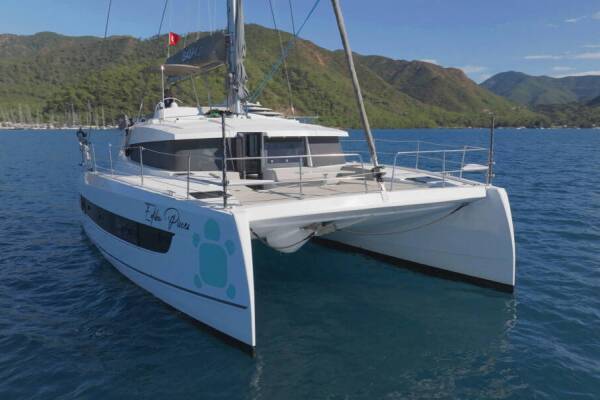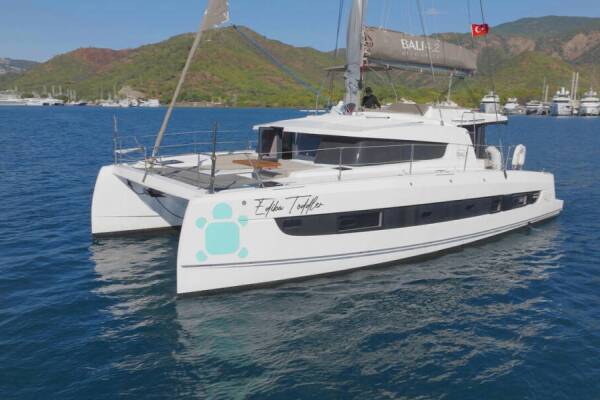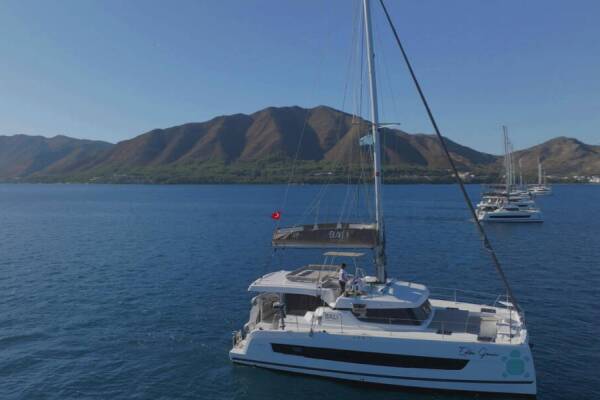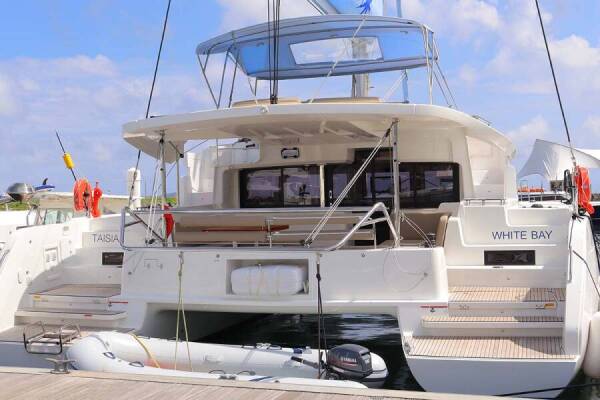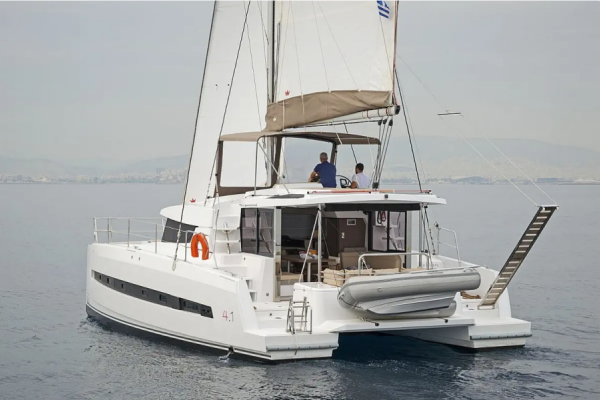On the last day of the Creation God desired to crown His work and thus created Kornati Islands out of tears, stars and breath..
This is how the Irish writer George Bernard wrote about the Kornati. Isn't that a great invitation to visit Croatia and sail the largest and most indented marine park in the Mediterranean, a wonder of nature and a labyrinth of 89 islands, islets, and reefs!?
The Kornati Islands became a National Park in 1980., due to the beauty of the environment, indented coastline, interesting geomorphology, and rich biocenosis of the marine ecosystem.
National Park Kornati is a "nautical paradise," with its 89 uninhabited islands, islets, and reefs on 300 km². This island group is the most rugged in the Mediterranean. Kornati NP is located around 15 NM, sailing southwest from Zadar and northeast from Šibenik. The park's name comes from the Latin word "corona," which means a crown, and they are named after the largest island in the group, Kornat.
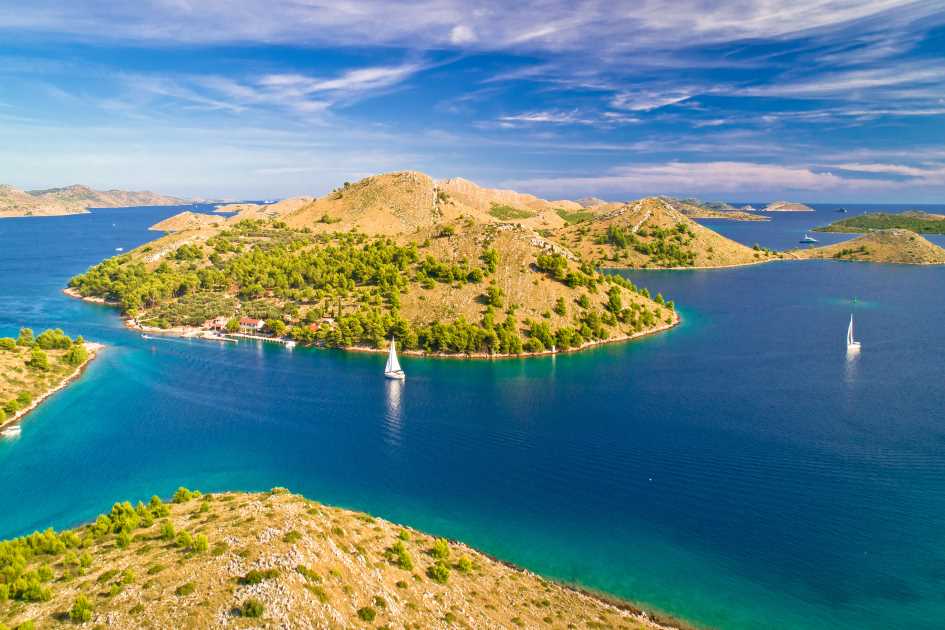
The open sea islands are characterized by crowns - cliffs, and steep slopes facing the open sea. The crowns result from the cracking and disintegration of the earth's crust and the processes of corrosion, erosion, and abrasion. The highest Kornati crown is 82 meters high on the island of Klobučar. The most extended crown is 1350 meters long, on Mana island. The island of Mana is one of the most beautiful lookouts on the Kornati.
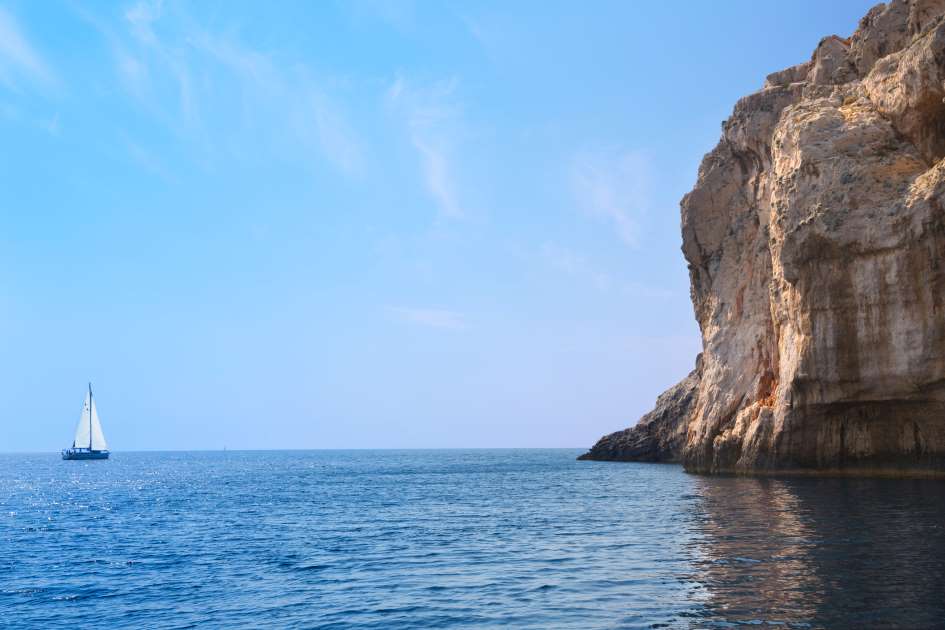
A recognizable view of the island of Kornati is the dry stone walls created by the hand of the valuable Kurnatars, built to demarcate estates and pastures and prevent sheep from moving to other estates. About 330 kilometers of dry stone walls are built on the Kornati, mostly on the largest island of Kornat.
Inhabitants of Murter and Betina came to the Kornati in the 1630s. The former owners of the pastures, the Zadar nobility, sought reliable shepherds to care for their flocks. On the other hand, people from Murter and Betina, who lived on the overcrowded island of Murter, were looking for a place to live off their main island. They took advantage of the situation and went to the Kornati to keep sheep. During the second half of the 19th century, they bought the land and became Kornati masters.
Kornati islands are known for sheep breeding and olive growing. Sheep farming has initially been the primary economic activity on the island. There are about 2,000 sheep on the island today and over 18,000 olive trees.
Today, the Kornati are not permanently inhabited. Still, peasant and fisherman's houses, scattered in the gentle, well-protected bays on the island of Žut, Sita, Kornat, and the associated islands, reveal their owners' presence. Today, these ports, turned into restaurants and accommodation facilities intended for "Robinson Crusoe" tourism, have become a favorite destination for boaters and tourists.
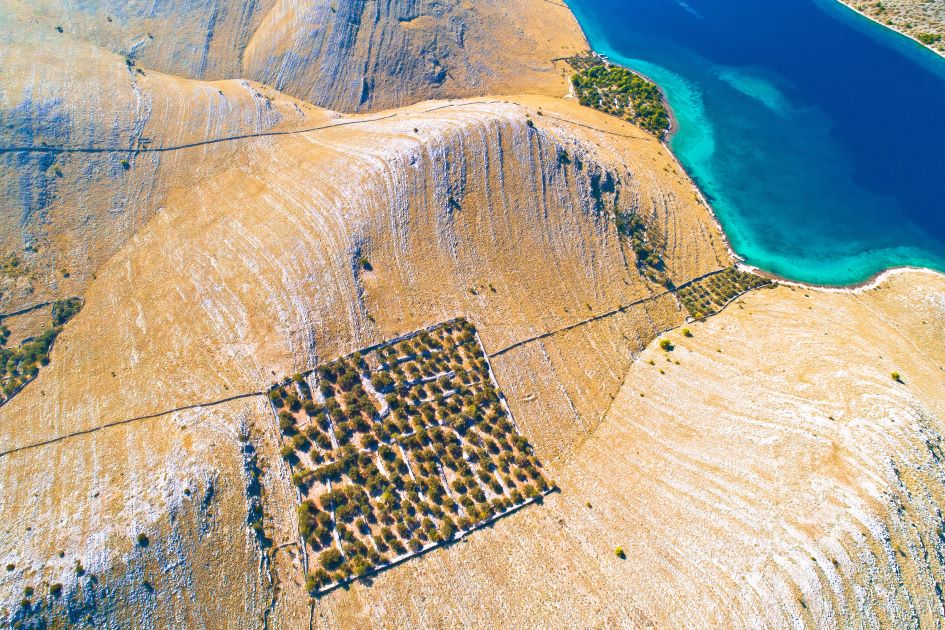
High, kilometers-long cliffs, rich flora, and fauna have been long attracting the attention of yachtsmen, divers, mountaineers, and other nature lovers.
For the depths lovers, the Kornati waters' beauty is a particular challenge. Dive in and meet the beautiful multicolored landscape with coral "forests," the diversity of fish species... the gorgeous Kornati underseas!
A visitor can experience the beauty of the landscape by hiking to numerous viewing points that command an archipelago's unforgettable view. A walk along island paths and through olive orchards will remind one of the hardworking hands of the Kurnatari, people from the Kornati, who gave the Kornati their appearance.
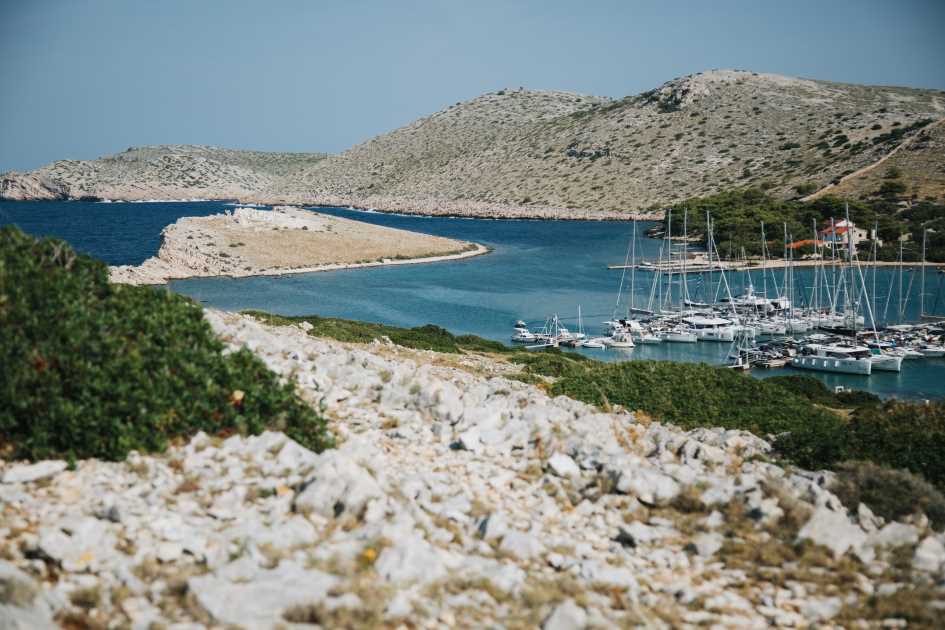
Sailing in Kornati National Park
Sailing through the Kornati labyrinth, exploring islands and islets, and all of their coves is a unique experience. The church of Our Lady of Tarac and the Tureta Fort are just two elements of the rich Kornati cultural heritage that has to be seen! There is a reason the Kornati carry the nickname "nautical paradise."
Sailing is allowed all around the Kornati National Park except in the zones of strict protection, which are areas around Purara islet, Klint and Volić reefs, Mrtenjak islet, Kolobučar islet, and Small Obručan and Great Obručan islets. No visitors are allowed at these four zones of strict protection.
Mooring in the National park is only allowed in the designated bays: Stiniva, Statival, Lupeška, Tomasovac – Suha Punta, Šipnate, Lučica, Kravljačica, Strižnja, Vruje, Gujak, Opat, Smokvica, Ravni Žakan, Lavsa, Piškera – Vela Panitula, Anica on Levrnaka, Podbižanj, and Koromašna. You can also moor at one of the two marinas, ACI Marina Piškera or ACI Marina Žut.
Sailors entering and visiting the National Park Kornati need to get a ticket. You can buy an entrance ticket on the spot in National Park, Online, or at Spots of Commission ticket sales. Tickets purchased outside the park's premises and at the webshop are cheaper than tickets purchased from the receptionists within the park's premises. For more details about restrictions and permissions in National Park, please read carefully on NP Kornati web.
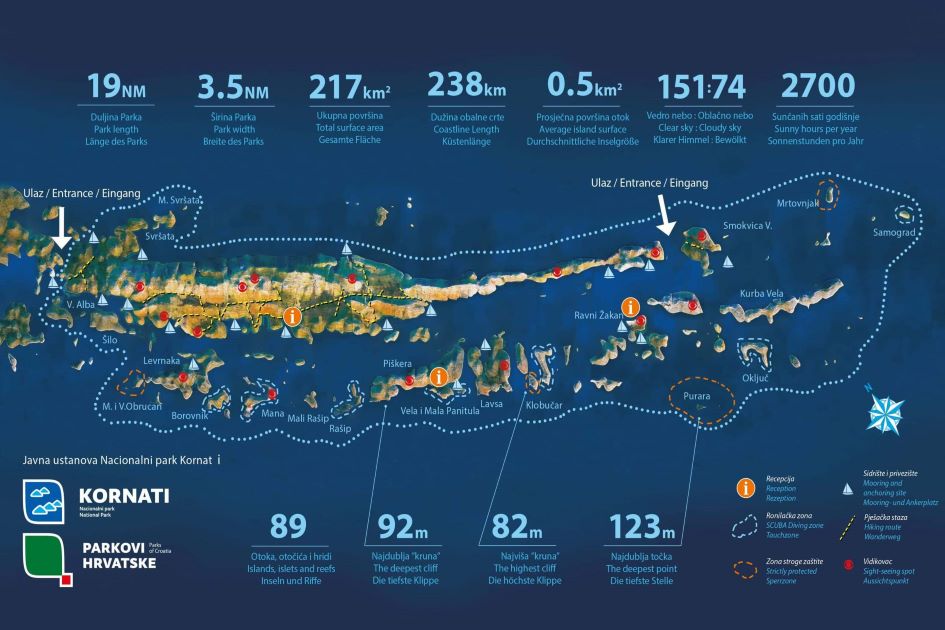
Besides the natural beauties, in the hidden coves of Kornati, you can enjoy an exceptional gastro experience. In Kornati National Park, there are more than 20 top restaurants, where you can taste unique specialties made of homegrown, fresh, delicious ingredients, complimented with great wine and fantastic views.
Konoba Opat, Core Kornati, Konoba Levranka, and Konoba Šoleta are just some of the Kornati restaurants where you can indulge in a blend of the natural environment and great food. All of these restaurants offer yacht moorings in front of the restaurant. If you charter a boat in Croatia with our skipper, he will show you all the secret ways to them.
You can book a boat tour to visit the Kornati, although the best way to sail and explore the Kornati at your own pace is to charter a private motorboat, sailing yacht, or catamaran.
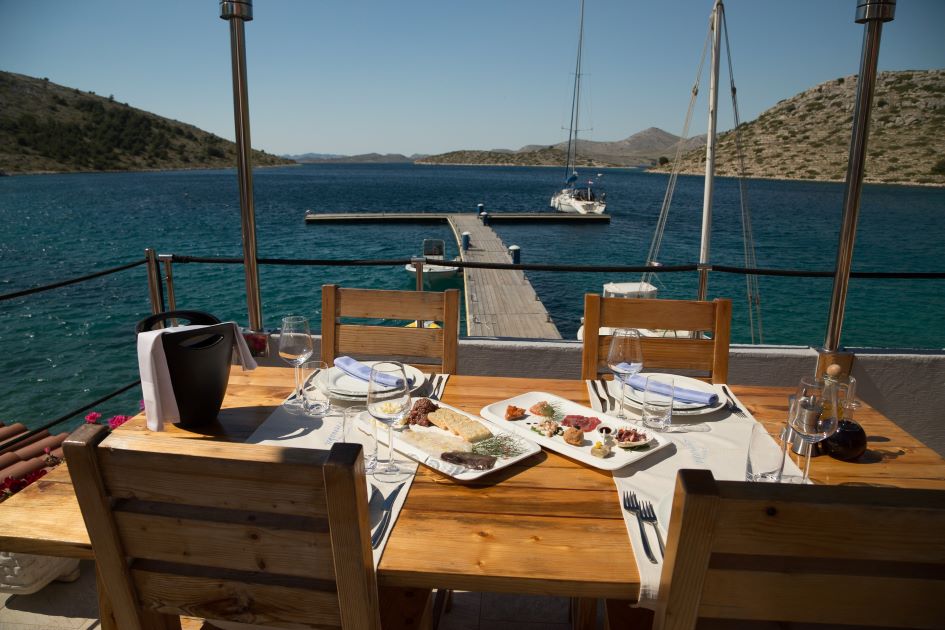
Whether you look at the Kornati Islands from the air, from the sea, or from sightseeing points on the islands, the view is equally impressive – and yet different to the eye every single time.
